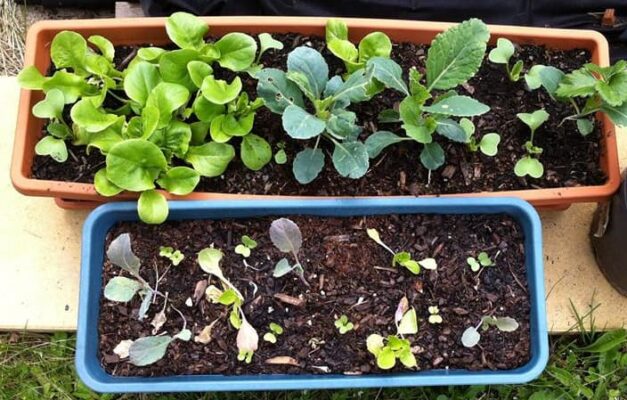BEST POTTING MIXES AUSTRALIA
Many gardeners look forward to starting their seeds at the beginning of the season, but give little thought to the most important part of their gardening adventure – the quality of the potting mix they will use.
Many years ago I conducted a simple test. I bought a bag of the most highly rated potting mix I could find, a bag of average potting mix and 3 lots of seedlings.
I was amazed to see that over the course of a month the seedlings in the premium potting mix thrived, the seedlings in the average potting mix did nothing, and some even died. Yes, that is correct. The worst case scenario if you use the wrong potting mix is that it can kill your seedlings!
A photo of that test is shown below.

I also conducted another test earlier this year. I planted some chilli seedlings in 4 different pots. 1 pot had a premium potting mix from a big box store, it was advertised as having 6 months of fertiliser in it. Another pot had the same brand, but promised 3 months of feeding. Another pot had a popular seed raising mix and the last pot had a mix I created using only coco coir (see notes below) and perlite. So this last pot did not have any fertiliser in it, to compensate for this I was going to always water it with a weak hydroponic liquid fertiliser. So the first 3 pots would be watered with water only, the last pot would be watered with liquid fertiliser.
The photos show the story. The inert potting mix plant soon grew rapidly, far outstripping the growth of the other pots.


What does this tell us?
When we buy potting mixes they are often full of matter that is still decomposing, and this robs the mix of nitrogen. As well, whilst the bag might say it will feed your plants for 3 – 6 months this is not really true if you are growing a large plant in a pot. It will feed on the available nutrients and then there is nothing left. You will often see plants in a pot with potting mix grow well and then after a few months start to struggle. That is because it has used up the fertiliser. Another problem with pots is that as you water, or as it rains, fertilisers are flushed out of the pot prematurely.
For me, the solution is simple. I grow plants in an inert mix with no nutrients, and then feed the plants each time I water them with a weak liquid fertilser solution. And I strongly recommend that your fertiliser solution is a product made for hydroponics as a liquid, or as a powder that you dissolve.
I am sure your next question is, what type of liquid fertiliser, there are so many? Most fertilisers will list the NPK of the product. Plants can usually take nutrients at a ratio of 3 – 1 – 2 so I recommend that you look for a fertiliser in that approximate ratio. And your plants will use and exhaust the nitrogen faster than they need the other part of the equation so always err on the side of a little more nitrogen. The product I use has N 8/ P1.8 / K 3 and it seems to work fine. Also make sure the product has calcium in it. Some fertilisers do not include calcium and it is essential.
GROW versus FLOWERING
Many fertiliser companies offer products that are “apparently” made to favour various growth stages. The evidence seems to suggest this is not how it works. The video below shows a gardener testing this idea. He grows chillies using a very popular and high quality powder fertiliser. He grows using the “grow” product for one set of plants, and uses the “grow” product and then switches to the “flowering” product for the other plants. Clearly, the plants that just use the grow product do better producing more healthier looking plants, more flowers and more fruit. The difference between the two products is the grow product has more nitrogen.
I hope that helps. There are some great resources on Youtube on this topic, it is useful to invest some time watching a few videos.
** My coco coir mix. Use coco coir that has already been prepared for use in the garden. You might find this product referred to as coco peat. Do not buy the compact block of coco coir unless you know how to prepare the coir. In all my tests I use the prepared coco peat bags. I mix it with perlite with a ratio of coco peat 60%, perlite 20%, vermiculite 20%.